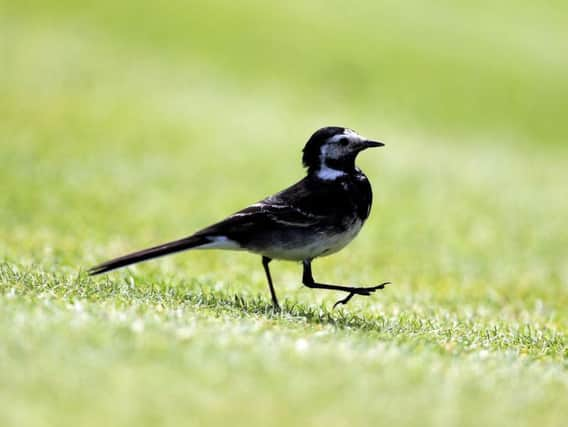Wag-tailed 'seed bird' is a Wensleydale icon - Roger Ratcliffe
This article contains affiliate links. We may earn a small commission on items purchased through this article, but that does not affect our editorial judgement.


While walking there this summer I have found it flitting along dry stone walls in the higher sheep pastures, then leaping after flies above the limestone cataracts of Redmire Force and even bouncing around the busy car park in Hawes.
Its sprightly gait, long and constantly mobile tail and striking black and white livery never fail to enliven whichever scene they grace.
Advertisement
Hide AdAdvertisement
Hide AdBut apart from the bird’s ubiquitousness, what makes me particularly associate it with Wensleydale is that the plumage is a perfect match for the black and white Friesians which are the premier milk-producing cows for the dale’s famous cheese.
Pied wagtails are also pretty widespread in the rest of Yorkshire. I recently found one striding around in the lane outside my house, and last week at Whitby I saw a couple of them tamely pecking around for crumbs which were falling from a takeaway pasty being eaten on a harbourside bench.
The bird’s most loved attribute is its constant motion, which inspired the poet John Clare to describe it as “little trotty wagtail”, while the 19th century naturalist William Yarrell wrote that the pied wagtail was “deservedly admired for the elegance of its form, as well as for the activity and airy lightness exhibited in all its actions. It is ever in motion, running in pursuit of its insect food, moving from place to place by short undulating flights, alighting again on the ground with a sylph-like buoyancy.”
Advertisement
Hide AdAdvertisement
Hide AdIn Yorkshire its old country name was the “seed bird”, which it shared with the less numerous grey wagtail and yellow wagtail. But here, as elsewhere, there is also a long list of other epithets specific to the pied wagtail. The most widespread are Willy Wagtail and Penny Wagtail. Many others, though, are associated with washing. The Dishwasher is a local name in the Craven area of North Yorkshire, but it is also in use as far away as the Home Counties, Somerset, Gloucestershire and Shropshire.
Other similar names include Molly Washdish in Hampshire, Polly Washdish in Dorset and the Scullery Maid in Wiltshire.
No one seems to know for sure how this association with washing came about. Perhaps it was inspired by the incessant up-and-down movement of the pied wagtail’s tail mimicking the motion of washing clothes or wiping dishes at the edge of a stream or river in days gone by.
Advertisement
Hide AdAdvertisement
Hide AdThe pied wagtail is one of the few species said to be almost exclusively British, with just a few scattered communities on the coasts of France and Holland.
Its ability to readily adapt to different habitats is probably the reason for the stability of its population, which has been increasing since the 1960s.
I have heard of the birds hanging around the car park at motorway services in summer to pick the dead insects off the front of vehicles.
And in keeping with those “washer” nicknames I read of one pair going into a car wash to pick dead insects out of the water.